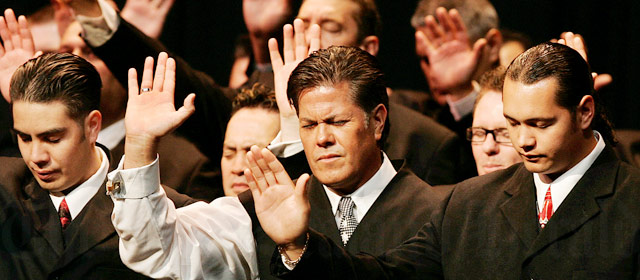Story summary
Early Pākehā settlers
European settlers brought their religious traditions, loyalties and conflicts with them to New Zealand. More than 90% of Pākehā were Christian, and more than three-quarters were Protestant.
Religious group membership
From the 1870s to the 1930s:
- Anglicans were about 40% of the population
- Presbyterians, mostly from Scotland, were more than 20% of the population
- Methodists, mostly from England, were about 10% of the population
- Catholics, mostly Irish, were about 14% of the population
- evangelical groups included Baptists, Congregationalists and the Salvation Army
- Jews were few in number but important in New Zealand’s cultural and economic life
- Chinese had Confucian, Buddhist and Taoist traditions
- small groups of secularists (non-religious people) also flourished.
Some churches had been a majority in the countries where they originated, but in New Zealand no one group dominated and there was no state church.
Māori religion
From the late 1820s many Māori converted to Christianity. The largest group were Anglicans.
Independent Māori Christian movements developed, often to resist the loss of land.
- Pai Mārire (meaning goodness and peace) flourished during the 1860s wars.
- The Ringatū faith was founded in 1867 by Te Kooti Arikirangi. Government soldiers later pursued him through the Urewera.
- Te Whiti-o-Rongomai was a prophet and resistance leader at Parihaka, Taranaki. The government sent over 1,500 troops to arrest him and disperse his followers.
- Rua Kēnana built a ‘City of God’ in the Urewera, where he was arrested by armed police in 1916.
Religion and politics
In the mid-19th century Anglicans led the campaign for Māori rights and welfare, which many settlers opposed.
From the 1870s to the 1930s Presbyterians, Methodists, Congregationalists and others worked together against gambling and alcohol, and in support of votes for women (won in 1893).
The Labour Party, which won power in 1935, presented itself as the party of practical Christian compassion. Many Labour politicians were church ministers, and the party formed an alliance with the Rātana Church.
Conflict
Conflict sometimes emerged between Catholics and Protestants, as it had in Ireland. Catholic schools were denied government funding until 1975.
Non-religious conscientious objectors were forced to go to war and punished if they refused to do so.
Towards religious diversity
From the 1960s church membership and attendance declined, and in 2013 42% of the population said they had no religion. However, many Pacific Islanders were still Christian. Mosques and temples were built as new immigrants arrived from a wider range of countries.





